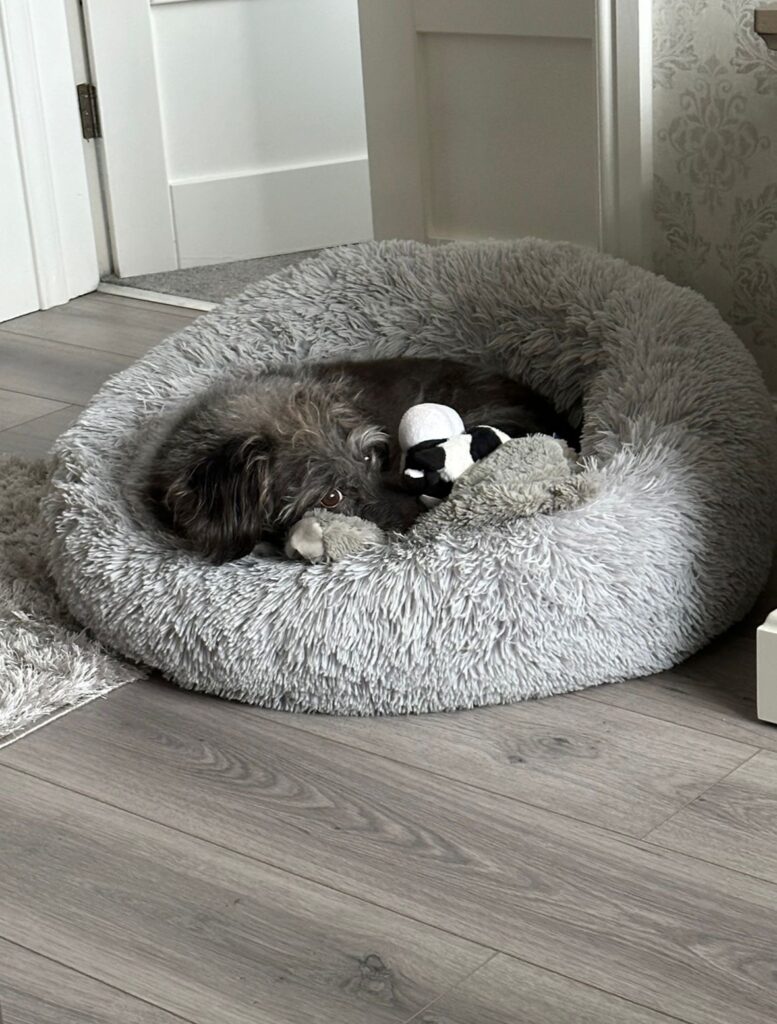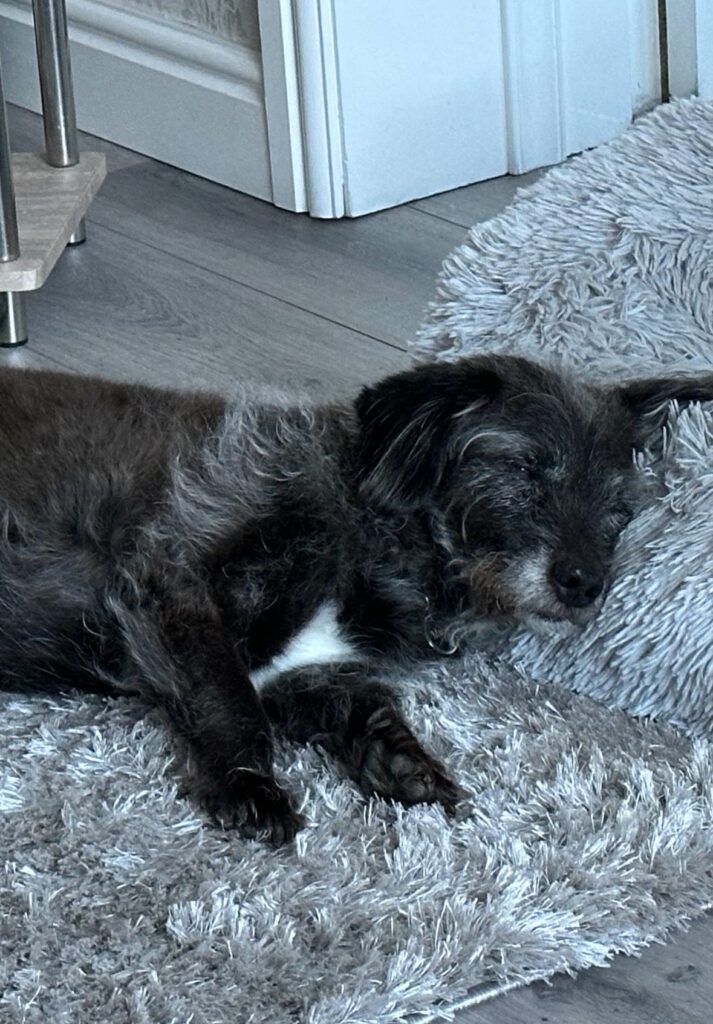Separation Anxiety in Dogs
Definition: A behavioural syndrome of dogs characterised by signs of distress when the affected dog is left alone or is separated from the person/people to whom it is attached.
Clinical Signs:
• Unwanted toileting in the house
• Excessive vocalisation
• Destructive behaviour
• Pacing
• Self-mutilation e.g. overgrooming
Additionally, dogs with separation anxiety may also exhibit signs of hyper-attachment, such as following the owner around the house in close proximity.
Consequences: The development of separation anxiety can have a huge impact on a pet and their owners quality of life. Therefore, being aware of this syndrome and trying to prevent it is important.
Prevention:
Step 1 – Encourage the dog to go to their bed and stay there for a short period with you present and then reward the calm behaviour.
Step 2 – Ask the dog to stay, while you move away and then return and reward.
Step 3 – Continue this routine, moving progressively further away and for longer periods. If the dog moves, don’t reward them and NEVER punish them – instead go back to the previous stage.
Step 4- Progress the training and start exiting the room (+/- shutting the door) and then the house before returning and rewarding.
Management of separation anxiety:
Management can consist of environmental control, behaviour modification and medication. However, due to the concerns of exacerbating the issue, ideally a veterinary or accredited behaviourist should be consulted first.
As your vets, we can provide a range of options:
– Veterinary consultation to help rule out other behavioural factors e.g. pain
– Behaviour advice service in connection with Behavioural Referrals
– Direct referral to a veterinary behaviourist for an in-detail home consultation and support.
Examples of simple environmental control:
-Minimise disturbances (leave in the quieter room/close curtains or turn the radio on to muffle outside noise)
-Leave enrichment when leaving e.g., food-filled toy or special soft toy
Examples of simple behaviour modification:
– Desensitise the dog to relevant departure cues, such as picking up keys or purse, multiple times per day without leaving and ignore the dog’s response
– Arrive home calming and ignore greeting behaviour until the dog has all 4 feet on the ground and greet the dog calmly
If you have any further queries or questions about behaviour, please contact us on 01606 880890 or 01606 717969.
Another helpful resource:
As it is a pressing issue, RSPCA has developed a #DogKind campaign to help raise awareness = www.rspca.org.uk/dogkind


